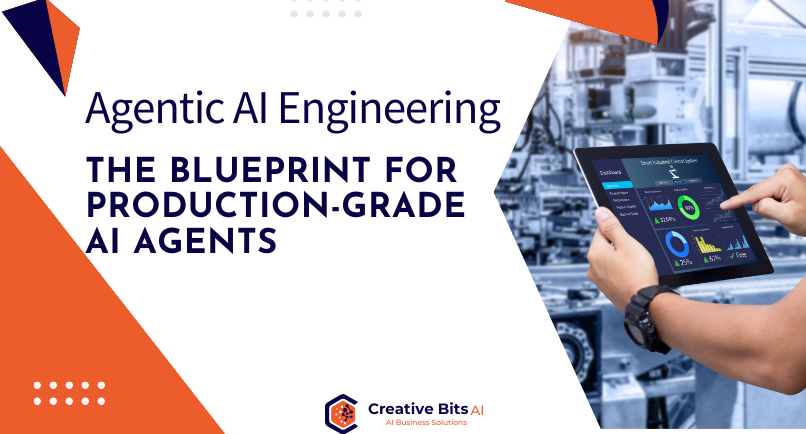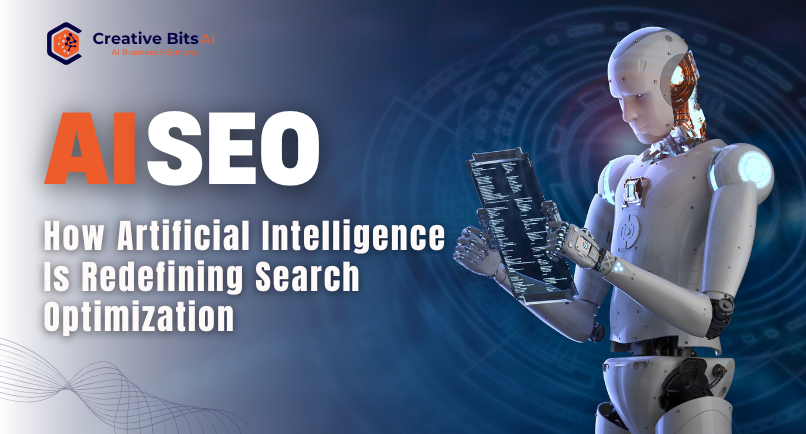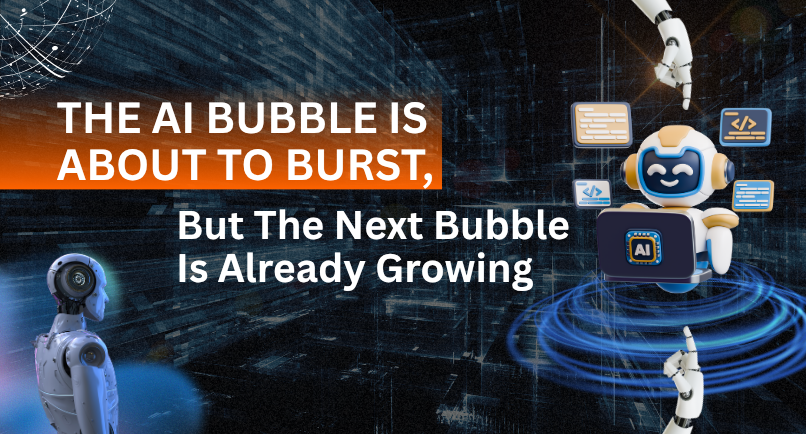Generative AI is at the cutting edge of mechanical advancement, upsetting businesses by improving effectiveness, cultivating innovativeness, and empowering new abilities. This blog looks at how various industries are using the power of generative AI to drive change and open up new opportunities.
- Marketing and Customer Engagement
Generative AI is changing how organizations associate with their clients, giving devices that make promoting more designated, effective, and significant.
- Hyper-Personalization: In the present competitive market, personalization is critical. Companies can now produce content that speaks directly to each customer thanks to generative AI. AI creates individualized advertisements, emails, and social media posts by analysing vast amounts of data, such as browsing history, purchase behaviour, and social media activity. These customized messages increment commitment, further develop consumer loyalty and fundamentally help change rates.
- Dynamic Content Creation: AI tools can autonomously generate marketing content at scale. Whether it’s writing blog posts, crafting ad copy, or creating video scripts, generative AI can produce content that aligns with brand voice and resonates with target audiences. This not only reduces the workload on marketing teams but also ensures that content is fresh and relevant.
- Predictive Customer Insights: In addition to producing content, AI also anticipates customer behaviour. Generative AI can predict future purchasing habits by analysing patterns and trends, assisting businesses in customizing their marketing strategies to meet shifting customer requirements. Companies can maintain a competitive edge and remain trend-ahead thanks to this proactive approach.
- Entertainment and Creative Arts
Previously driven by human creativity, the entertainment industry is now embracing AI as a powerful collaborator.
- AI-Generated Music and Art: Musicians and visual artists are exploring the creative potential of AI. Generative AI can compose original pieces of music tailored to specific moods or genres, providing artists with new ways to experiment and innovate. Similarly, AI-generated art can create visually stunning pieces, pushing the boundaries of creativity and introducing new aesthetics into the art world.
- Scriptwriting and Storytelling: In film and TV, simulated intelligence is turning into a significant device for scriptwriters. Existing scripts can be analyzed by generative models to discover effective narrative structures and suggest novel plot twists or character development. This helps authors overcome creative roadblocks and improve their storytelling.
- Visual Effects and Animation: The production of visual effects (VFX) and animations is both tedious and asset escalated. By generating realistic effects and animations from straightforward inputs, AI accelerates these processes. This permits movie producers and game engineers to deliver top-notch visuals all the more rapidly and at a lower cost, empowering them to push the limits of what’s conceivable in computerized media.
- Personalized Content Recommendations: By providing personalized content recommendations, streaming platforms like Netflix and Spotify are utilizing AI to enhance the user experience. AI creates a curated list of shows, movies, or songs that are likely to appeal to individual users by analyzing their viewing or listening habits and keeping them engaged and satisfied.
- Architecture and Design
Generative AI is reshaping engineering and planning enterprises, making it conceivable to make imaginative designs and plans with more prominent effectiveness and innovativeness.
- Rapid Prototyping and Iteration: In architecture and product design, the ability to explore multiple design options quickly is invaluable. Generative AI allows designers to input various parameters—such as materials, space constraints, and aesthetic preferences—and generates numerous design prototypes. This enables architects and designers to evaluate different possibilities and refine their ideas rapidly, leading to more creative and optimized outcomes.
- Sustainable and Efficient Design: Supportability is a developing worry in engineering. Designs can be optimized with generative AI for energy efficiency, resource consumption, and impact on the environment. By breaking down information connected with building materials, environmental conditions, and energy utilization, simulated intelligence creates plans that limit ecological impression while expanding usefulness and tasteful allure.
- Customizable and Adaptive Designs: Tools driven by AI make it possible to create highly individualized designs that can adapt to the needs of particular users or the conditions of the environment. For instance, computer-based intelligence can produce building plans that consequently conform to changing weather conditions, guaranteeing ideal solace and energy use. This level of customization was once difficult to achieve, but AI is making it commonplace.
- Healthcare and Medicine
Generative AI is ready to upset medical services by propelling examination, further developing diagnostics, and customizing patient considerations.
- Accelerated Drug Discovery: Developing new drugs is a complex and lengthy process. Generative AI is speeding up this process by simulating the interaction between drugs and biological systems, helping researchers identify promising compounds more quickly. This reduces the time and cost of bringing new drugs to market, ultimately leading to faster treatment for patients.
- Enhanced Medical Imaging: AI is transforming the field of medical imaging by generating highly detailed images that improve diagnostic accuracy. For instance, AI can enhance MRI and CT scans, providing doctors with clearer views of internal organs and tissues. This allows for earlier detection of diseases and more precise treatment planning.
- Personalized Medicine: Every patient is unique, and so should their treatment. Generative AI enables the creation of personalized treatment plans based on an individual’s genetic makeup, medical history, and lifestyle. By analyzing this data, AI can suggest the most effective treatment options, improving outcomes and reducing the likelihood of adverse reactions.
- Synthetic Data for Research: Privacy concerns often limit access to real patient data for research purposes. Generative AI addresses this issue by creating synthetic data that mimics real patient information. This synthetic data allows researchers to conduct studies and develop new treatments without compromising patient privacy.
- Manufacturing and Supply Chain Optimization
By making production processes more adaptable, cutting costs, and improving efficiency, generative AI is reshaping manufacturing and supply chain management.
- Predictive Maintenance: Equipment failure can lead to costly downtime in manufacturing. Generative AI predicts when machines are likely to fail by analyzing data from sensors and historical performance records. This allows companies to perform maintenance before a breakdown occurs, reducing downtime and maintenance costs.
- Supply Chain Optimization: From acquiring raw materials to delivering goods, managing a supply chain necessitates the coordination of numerous moving parts. By forecasting demand, identifying potential bottlenecks, and suggesting effective logistics strategies, generative AI aids in the optimization of supply chain operations. Costs are reduced, delivery times are reduced, and customer satisfaction is raised as a result.
- Product Design and Prototyping: AI accelerates product development by generating multiple design prototypes based on specific criteria such as material properties, cost, and manufacturing constraints. This allows companies to iterate quickly, refine their designs, and bring innovative products to market faster.
- Finance and Risk Management
The finance industry is utilizing generative AI to further develop direction, upgrade security, and advance activities.
- Fraud Detection and Prevention: Financial institutions are constantly at risk of fraud. Generative AI enhances security by analyzing transaction data in real-time to detect unusual patterns that may indicate fraudulent activity. This enables banks to prevent fraud before it occurs, protecting both themselves and their customers.
- Risk Assessment and Management: In finance, assessing risk is crucial for making informed investment decisions. Generative AI analyzes vast amounts of financial data, economic indicators, and market trends to provide accurate risk assessments. This helps financial institutions and investors make more informed decisions, balancing potential rewards against risks.
- Portfolio Optimization: AI-driven tools help financial advisors and investors create optimized portfolios that align with their financial goals and risk tolerance. By analyzing market data and predicting future trends, generative AI generates investment strategies that maximize returns while minimizing risk.
- Education and Training
Generative AI is upgrading instruction by customizing opportunities for growth, supporting teachers, and empowering new types of preparation.
- Personalized Learning Paths: Every student learns differently, and generative AI can create customized learning paths that cater to individual needs. By analyzing student performance and preferences, AI generates content and exercises that help students grasp concepts more effectively and at their own pace.
- Virtual Tutors and Assistants: AI-powered virtual tutors provide real-time support to students, answering questions, explaining concepts, and offering feedback on assignments. This helps students learn more effectively and provides educators with insights into areas where students may need additional help.
- Curriculum Development: Educators can use generative AI to design curricula that are both comprehensive and up-to-date. AI tools analyze educational standards, learning objectives, and student needs to generate content that aligns with these goals, ensuring that the curriculum is relevant and effective.
- Corporate Training and Skill Development: In the corporate world, generative AI is used to create personalized training programs that address the specific needs of employees. AI can generate simulations, quizzes, and interactive modules that help employees develop new skills and stay current with industry trends.
Conclusion
Generative AI is more than just a tool; it is a catalyst for innovation in many different fields. From showcasing and amusement to medical care and money, man-made intelligence is empowering organizations to investigate additional opportunities, further develop productivity, and convey better items and administrations. This technology’s applications will only get bigger as it gets better, giving it even more room for change and growth. Embracing generative computer-based intelligence is fundamental for organizations that need to remain serious in an undeniably advanced world. Companies can not only make their operations more efficient but also open up new opportunities for creativity, innovation, and success by making use of AI-driven solutions.




